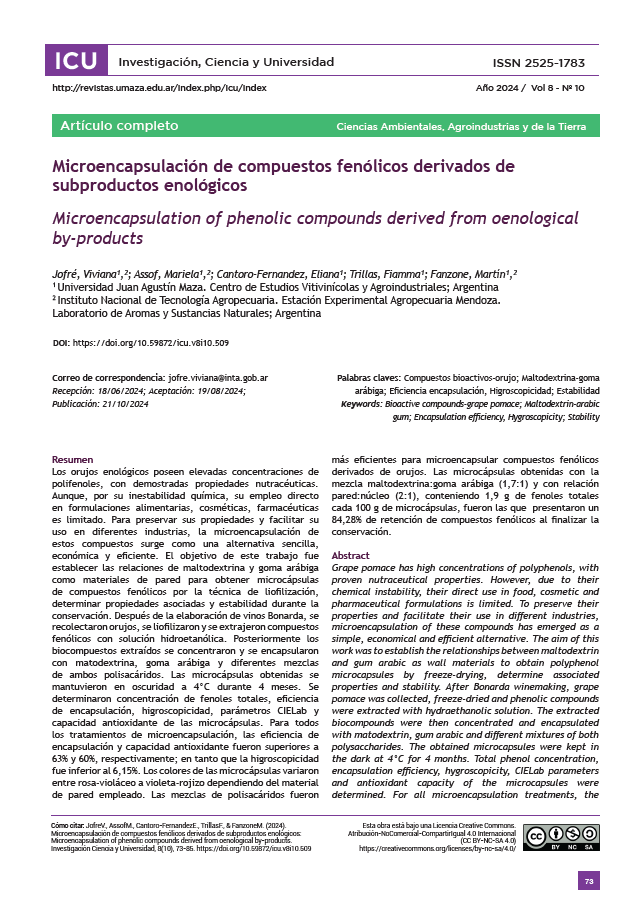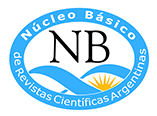MICROENCAPSULATION OF PHENOLIC COMPOUNDS DERIVED FROM OENOLOGICAL BY-PRODUCTS
Microencapsulation of phenolic compounds derived from oenological by-products
DOI:
https://doi.org/10.59872/icu.v8i10.509Keywords:
Bioactive compounds-grape pomace; Maltodextrin-arabic gum; Encapsulation efficiency, Hygroscopicity; Stability.Abstract
Grape pomace has high concentrations of polyphenols, with proven nutraceutical properties. However, due to their chemical instability, their direct use in food, cosmetic and pharmaceutical formulations is limited. To preserve their properties and facilitate their use in different industries, microencapsulation of these compounds has emerged as a simple, economical and efficient alternative. The aim of this work was to establish the relationships between maltodextrin and gum arabic as wall materials to obtain polyphenol microcapsules, determine associated properties and stability. After Bonarda winemaking, grape pomace was collected, freeze-dried and phenolic compounds were extracted with hydraethanolic solution. The extracted biocompounds were then concentrated and encapsulated with matodextrin, gum arabic and different mixtures of both polysaccharides. The obtained microcapsules were kept in the dark at 4°C for 4 months. Total phenol concentration, encapsulation efficiency, hygroscopicity, CIELab parameters and antioxidant capacity of the microcapsules were determined. For all microencapsulation treatments, the encapsulation efficiency and antioxidant capacity were higher than 63% and 60%, respectively, while the hygroscopicity was lower than 6.15%. The colours of the microcapsules ranged from pink-violet to violet-reddish depending on the wall material used. Polysaccharide mixtures were more efficient in microencapsulating phenolic compounds derived from pomace. The microcapsules obtained with the wall:core ratios 2:1 and 10:1, showed concentrations of total phenols higher than 870mg/100gmicrocapsules. At the end of storage, the microcapsules (2:1) had a retention percentage of phenolic compounds of 84.28%, and those (10:1), 81.06%.
Downloads

Published
How to Cite
Issue
Section
Categories
License
Copyright (c) 2024 Viviana Jofré, Mariela Assof, Eliana Cantoro-Fernandez, Fiamma Trillas, Martín Fanzone

This work is licensed under a Creative Commons Attribution-NonCommercial-ShareAlike 4.0 International License.





















